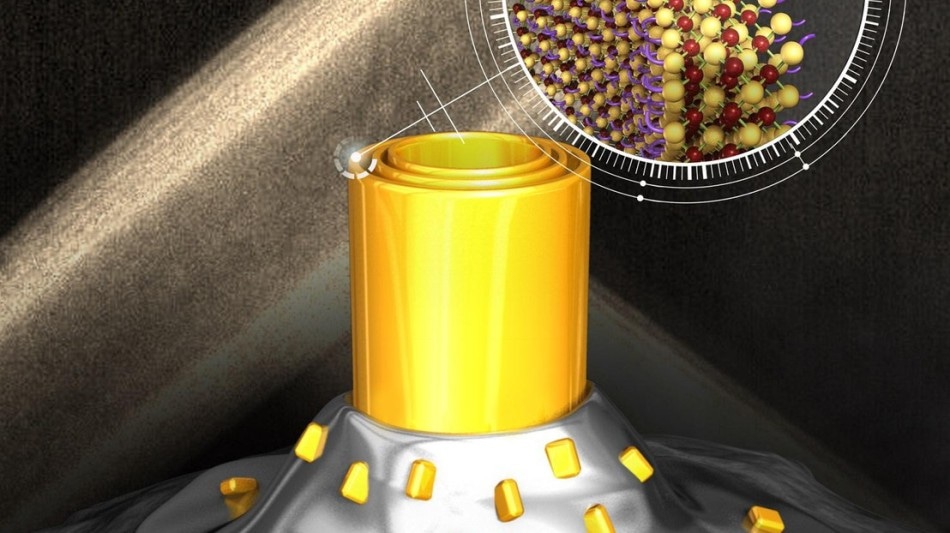Jul 4 2019
Scientists at EPFL have found a method to make semiconducting, photoluminescent nanotubes form spontaneously in liquid solutions.
 (Image credit: EPFL)
(Image credit: EPFL)
The tubes — which contain many walls that are perfectly uniform and have a thickness of just a few atoms — exhibit optical properties that render them ideal for use as photocatalysts or fluorophores.
If researchers could find a means to regulate the process of creating semiconductor components on a nanometric scale, they could impart distinctive optical and electronic properties to those components — paving the way for several useful applications.
With the invention of semiconducting nanotubes that assemble automatically in solutions of metallic nanocrystals and certain ligands, scientists at the Laboratory of Microsystems, in EPFL’s School of Engineering, have made a significant move toward that objective. The tubes consist of around three to six walls that are perfectly uniform and have a thickness of just a few atoms — making them the first such nanostructures of their type.
Furthermore, the nanotubes have photoluminescent properties: they can capture light of a particular wavelength and subsequently emit intense light waves of a different color, similar to quantum wells and quantum dots. This implies that they can be employed as fluorescent markers in medical research, for instance, or as catalysts in photoreduction reactions, as shown by the removal of the colors of some organic dyes, on the basis of the outcomes of initial experiments.
The findings of the scientists have appeared on the cover of ACS Central Science.
An Accidental Discovery
However, the distinctive feature of these semiconducting nanotubes is the way they are created.
Our discovery happened almost by chance. We had set out to study the role that certain ligands play in making 2D semiconducting nanometric crystals.
Xiaopeng Huang, Study Lead Author, EPFL
However, the group of scientists discovered that certain ligands caused molecules to spontaneously combine in exact cylindrical structures which had been impossible to make so far.
Investigating New Properties
The scientists will now study the other electrical and physical properties of the nanotubes and investigate ways for creating nanotubes with only one wall.